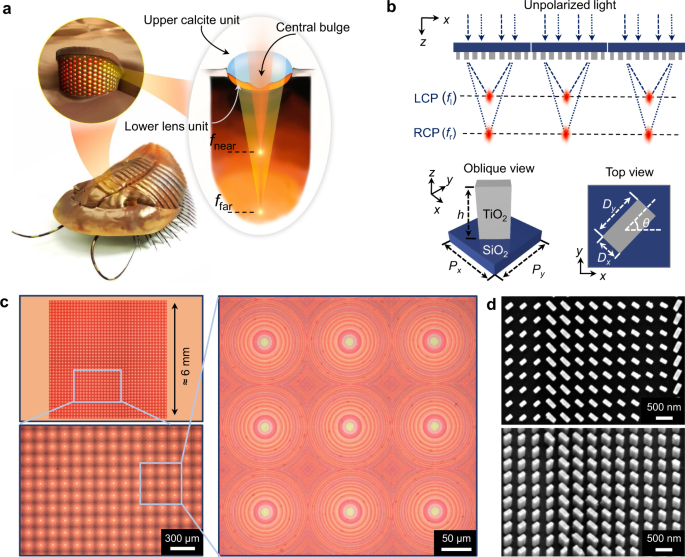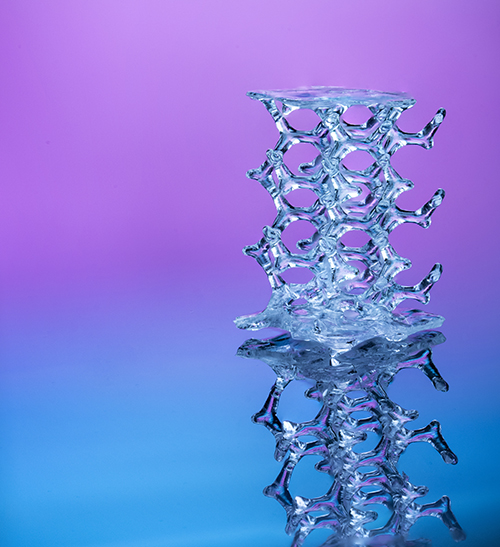NISTの研究者たちは、三葉虫の複眼からヒントを得て、近くも遠くも見える小さなレンズを作製しています。 Drawing lessons from the compound eyes of trilobites, NIST researchers fabricate tiny lenses that see both near and far.
2022-04-19 アメリカ国立標準技術研究所(NIST)
このような軽量で被写界深度の深いカメラは、ナノメートルのフォトニック技術とソフトウェア駆動の写真技術を統合したもので、将来の高解像度画像システムに革命をもたらすと期待されている。特に、街並みや広い視野を占める生物の群れなど、遠くのものにも近くのものにもピントを合わせなければならないような撮影において、高精細な画像を生成する能力を大きく向上させることが期待される。
NISTの研究者であるAmit Agrawal氏とHenri Lezec氏、およびメリーランド大学カレッジパーク校と南京大学の研究者らは、この研究成果をNature Communications誌のオンライン版(4月19日号)に掲載しています。
<関連情報>
- https://www.nist.gov/news-events/news/2022/04/inspired-prehistoric-creatures-nist-researchers-make-record-setting-lenses
- https://www.nature.com/articles/s41467-022-29568-y
三葉虫に着想を得た極限被写界深度の神経ナノフォトニック光電場カメラ Trilobite-inspired neural nanophotonic light-field camera with extreme depth-of-field
Qingbin Fan,Weizhu Xu,Xuemei Hu,Wenqi Zhu,Tao Yue,Cheng Zhang,Feng Yan,Lu Chen,Henri J. Lezec,Yanqing Lu,Amit Agrawal &Ting Xu
Nature Communications Published: 19 April 2022
DOI:https://doi.org/10.1038/s41467-022-29568-y

Abstract
A unique bifocal compound eye visual system found in the now extinct trilobite, Dalmanitina socialis, may enable them to be sensitive to the light-field information and simultaneously perceive both close and distant objects in the environment. Here, inspired by the optical structure of their eyes, we demonstrate a nanophotonic light-field camera incorporating a spin-multiplexed bifocal metalens array capable of capturing high-resolution light-field images over a record depth-of-field ranging from centimeter to kilometer scale, simultaneously enabling macro and telephoto modes in a snapshot imaging. By leveraging a multi-scale convolutional neural network-based reconstruction algorithm, optical aberrations induced by the metalens are eliminated, thereby significantly relaxing the design and performance limitations on metasurface optics. The elegant integration of nanophotonic technology with computational photography achieved here is expected to aid development of future high-performance imaging systems.



